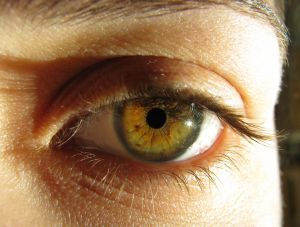Alison, 25, had been married less than a year when she and her husband decided it was time to start the large family both hoped to have. When she noticed that familiar street signs as well as the numbers on her computer screen were a little blurry, she chalked it up to eye strain from long hours at work. However, as it became apparent that her vision loss was progressing, Alison saw an ophthalmologist. The doctor diagnosed her as suffering from Best disease, a disorder linked to heredity.
Overview
Best disease is sometimes also called Vitelliform Macular Dystrophy type 2 (VMD2). According to the National Center for Biotechnology Information, it is most prevalent in Caucasians of European ancestry. Males and females develop the illness in roughly equal proportions.
The gene responsible for this order, VMD2, is located on chromosome 11. A mutation in only one copy of this gene can cause an individual to develop the disorder.
Over time, often starting in childhood, the patient loses visual acuity.
The typical pattern of development of Best disease includes a gradual loss of sharp vision that starts as a teenager. However, the frequency of signs of this rare disorder and the severity of its symptoms vary from one patient to the next, eMedicine reports. Although doctors might note signs of the disorder during an eye exam, many patients initially have no symptoms.
Before they notice a loss of vision, patients develop a mass that looks like an eye yoke in the section of the retina that governs central vision. As the disease progresses, this mass breaks up, resulting in a gradual loss of vision.
Best disease has five defined stages: previtelliform, vitelliform, pseudohypopyon, vitelliruptive and atrophic. As a patient progresses through each one, visual acuity decreases from an optimal reading of 20/20 to 20/200 or even less. During the fifth stage, atrophic, it is difficult for doctors to distinguish the condition from several types of macular degeneration.
Diagnosis and Treatment
Doctors diagnose Best disease as the result of three types of testing. An electrooculogram determines the difference in an electrical charge between the front and back of a patient’s eye, linked to eyeball movement. Electrodes placed on the individual’s skin near the eye transmit information. In most patients with Best disease, physicians note a marked decrease in light response. Results are usually similar for both eyes, but the test doesn’t define the stage of the disorder.
An electroretinogram (ERG) is another diagnostic tool. While a full-field ERG usually shows a normal result for patients with Best’s disease, a focal or multifocal ERG can reveal abnormal function that maps to the area of the eye affected.
Genetic testing can confirm a genetic defect in chromosome 11, in the q12-q13.1 region, indicative of Best disease.
Unfortunately, there is no cure or standard treatment for Best disease. Some patients appear to be somewhat helped by injections of bevacizumab into the vitreous of the eye. Others receive direct laser treatment to help manage the disorder. For some patients, assistive devices are helpful. Both genetic and career counseling aid patients suffering from this type of deteriorating vision.
The professionals most often involved with the care of individual with Best disease include ophthalmologists, vitreoretinal disease specialists, low-vision specialists, occupational therapists and geneticists.
Sources:
http://www.ncbi.nlm.nih.gov/books/NBK22187/
http://emedicine.medscape.com/article/1227128-overview
